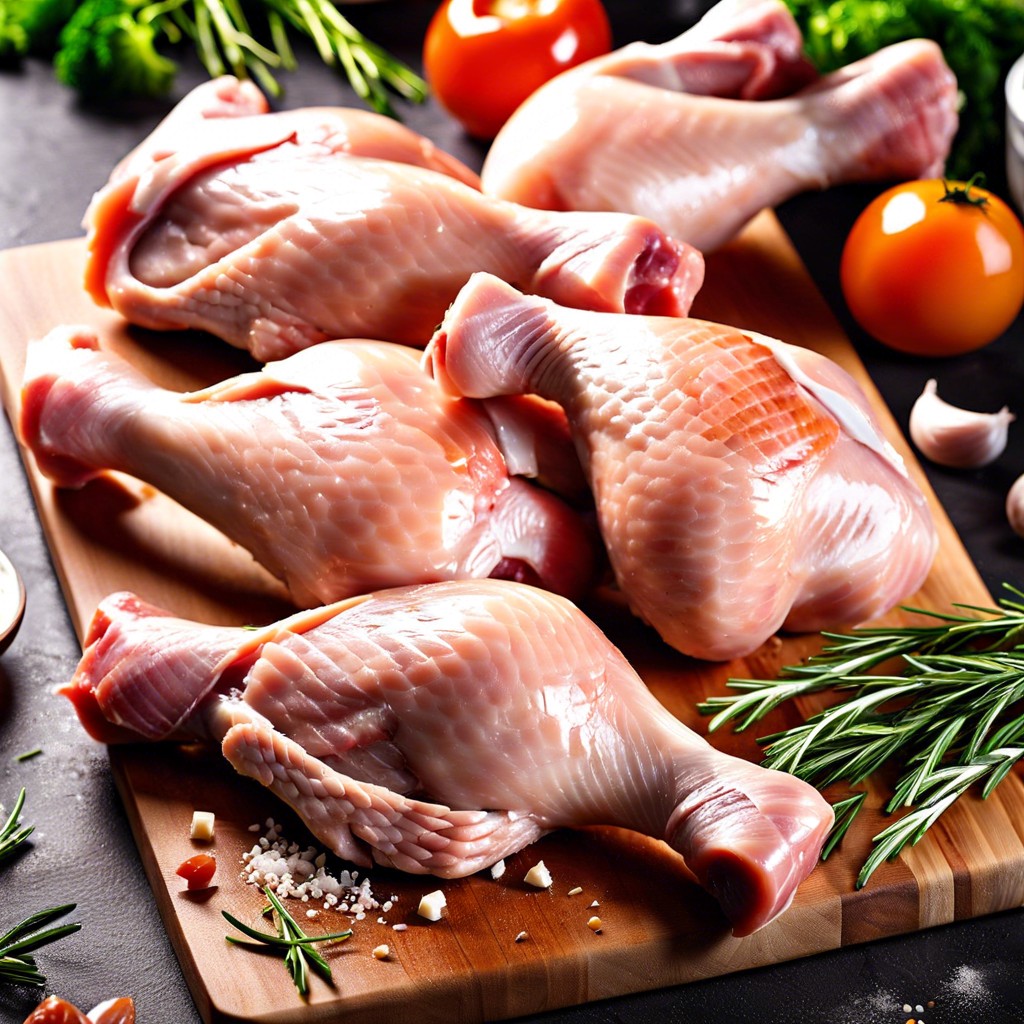Learn the foolproof method to BBQ chicken legs that ensures juicy, flavorful results every time.
Key takeaways:
- Select fresh, high-quality chicken legs for even cooking.
- Craft a balanced BBQ rub for caramelized, flavorful results.
- Choose between smoking for deep, wood-infused taste and grilling for a crisp exterior.
- Ensure chicken legs reach an internal temperature of 165°F for food safety.
- Pair BBQ chicken legs with cooling, crisp sides to offset the rich, smoky flavor.
Selecting the Chicken Legs

Opt for fresh, high-quality chicken legs, which are often labeled as drumsticks, for the best BBQ results. The size of the drumsticks matters; uniformity in size ensures even cooking.
Chickens raised without antibiotics or added hormones, although more expensive, can yield a more natural flavor profile. Additionally, skin-on legs retain moisture better and allow the rub to adhere properly, contributing to a crispy exterior.
Check for a sell-by date that is as far in the future as possible to guarantee freshness. Organic and free-range options, while not necessary for a succulent outcome, align with health-conscious preferences and animal welfare considerations.
Preparing the BBQ Rub
Crafting the perfect BBQ rub is a balancing act between sweet, spicy, and savory. Start with a base of brown sugar to create a caramelized exterior as the legs cook. Add paprika for smokiness, and consider a hint of cayenne for a heat that lingers. Garlic powder and onion powder bring aromatic depth, while kosher salt works to intensify the chicken’s natural flavors. For an unexpected twist, a touch of ground cumin can lend earthiness to the mix.
The rub should be massaged evenly into the chicken legs to ensure every nook and cranny is seasoned. This not only develops a flavorful crust but also helps retain the juices. Rest the seasoned chicken legs for at least 15 minutes before cooking, allowing the rub to work its magic and adhere better during the cooking process. Remember, the harmony of spices in the rub can make or break the final taste, so it’s crucial to measure and mix with precision.
Smoking Vs. Grilling Techniques
When contemplating the choice between smoking and grilling chicken legs, it’s essential to recognize the influence of time and flavor. Smoking imparts a deep, wood-infused taste and requires patience, with the process typically extending over several hours at low temperatures around 225 to 275 degrees Fahrenheit. This slow cook fosters not just flavor but also moisture retention, yielding tender meat.
Grilling, by contrast, is the quicker method, with high heat searing the surface, creating a crisp exterior. Done over direct medium to medium-high heat, the legs can be ready within 30 to 40 minutes. To balance flair and char, keep a watchful eye, turning the legs frequently to prevent charring while maintaining succulence beneath the skin.
The moisture in chicken legs favors smoking, which uses the fat and collagen within to produce a juicy result, whereas grilling calls for careful attention to avoid dryness. Both techniques have their merits, but the chosen method should align with the desired texture and available cooking time.
Ensuring Safe Internal Chicken Temperatures
Safeguarding the health of those savoring your barbecue starts with proper cooking temperatures. Chicken legs must reach an internal temperature of 165°F to ensure that harmful bacteria are destroyed. A reliable meat thermometer is an indispensable tool in achieving this.
When checking the temperature, insert the thermometer into the thickest part of the chicken leg without touching the bone, as bones conduct heat differently and can give a misleading reading. For consistency, verify the temperature in several spots. During cooking, if the chicken nears the target temperature but the skin isn’t crisped to your liking, use direct heat briefly to finish. Resist the urge to cut into the meat to check doneness; this can release juices and result in dryer meat.
Remember, poultry can carry pathogens like Salmonella and Campylobacter, which can cause foodborne illnesses. Abiding by the 165°F standard is the best way to ensure a safe and enjoyable BBQ experience.
Pairing Sides With BBQ Chicken Legs
When considering what to serve alongside BBQ chicken legs, aim for a balance of flavors and textures. Opt for cooling, crisp sides like coleslaw or a fresh cucumber salad to offset the smoky richness of the meat. Hearty baked beans or corn on the cob can provide a sweetness that complements the savory BBQ rub, while a tangy potato salad cuts through the fat and adds a creamy component. Don’t overlook the power of a simple grilled vegetable skewer either—the char brings a delightful contrast and contributes to a well-rounded BBQ experience.